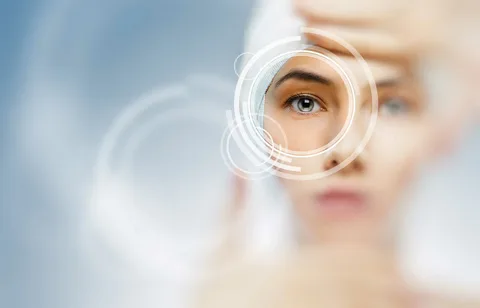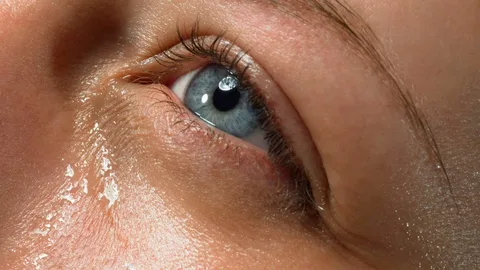Watery eyes, or excessive tearing, can be a common yet frustrating issue for many people. While it might seem like a minor annoyance, understanding the underlying causes and effective solutions can make a significant difference in your comfort and daily life. In this article, we will explore the main causes of watery eyes, the symptoms to look out for, and various treatments available to help alleviate this condition.
What Are Watery Eyes?
Watery eyes occur when the tear glands produce more tears than necessary. While tears play a crucial role in maintaining eye health, excessive tearing can lead to discomfort and other issues. In some cases, watery eyes can be a symptom of an underlying condition that requires attention.
Common Causes of Watery Eyes
1. Allergies
Allergic reactions are one of the most common causes of watery eyes. Pollen, dust, pet dander, and certain foods can trigger an allergic response, leading to irritation and excessive tearing. When your body encounters an allergen, it releases histamines, which can cause your eyes to water.
Symptoms of Allergic Reactions:
- Itchy, red eyes
- Sneezing
- Nasal congestion
- Swelling around the eyes
2. Dry Eyes
Ironically, dry eyes can lead to watery eyes. When the eyes do not produce enough tears, they can become irritated. In response, the body may overcompensate by producing more tears, resulting in watering.
Common Causes of Dry Eyes:
- Environmental factors (wind, smoke, air conditioning)
- Aging
- Certain medications (antihistamines, antidepressants)
- Medical conditions (Sjogren’s syndrome, rheumatoid arthritis)
3. Eye Infections
Infections such as conjunctivitis (pink eye) can cause inflammation and lead to watery eyes. This condition can be viral, bacterial, or allergic, and is often accompanied by other symptoms.
Symptoms of Eye Infections:
- Red or swollen eyes
- Discharge from the eye
- Sensitivity to light
- Crusty eyelids upon waking
4. Blocked Tear Ducts
Tear ducts are responsible for draining tears from the eyes into the nose. If these ducts become blocked, tears can accumulate and cause watering. This condition is more common in infants and older adults.
Symptoms of Blocked Tear Ducts:
- Excessive tearing
- Eye infections
- Swelling near the inner corner of the eye
5. Environmental Irritants
Smoke, pollution, strong odors, and chemicals can irritate the eyes, leading to excessive tearing. These irritants can cause a reflexive response from the tear glands.
Common Environmental Irritants:
- Cigarette smoke
- Air pollution
- Household cleaners
6. Contact Lenses
Wearing contact lenses can sometimes lead to watery eyes, particularly if they are not properly fitted or cleaned. Lenses can cause irritation, dryness, and discomfort, prompting the eyes to produce more tears.
Symptoms Related to Contact Lens Issues:
- Blurred vision
- Redness
- Discomfort or pain
7. Eyelid Problems
Conditions such as blepharitis (inflammation of the eyelids) or ectropion (outward turning of the eyelid) can lead to watery eyes. These conditions can disrupt the normal functioning of the tear film.
Symptoms of Eyelid Problems:
- Red or swollen eyelids
- Flaky skin around the eyelids
- Excessive tearing

Symptoms of Watery Eyes
Watery eyes can manifest in various ways. While the primary symptom is excessive tearing, additional symptoms may accompany it depending on the underlying cause. Here are some common signs to watch for:
- Itching or Burning Sensation: Often associated with allergies or infections.
- Redness: Indicates irritation or infection.
- Discharge: Thick or colored discharge can suggest an infection.
- Sensitivity to Light: May occur with infections or irritations.
Diagnosis of Watery Eyes
If you experience persistent watery eyes, it’s essential to consult an eye care professional. A thorough examination can help identify the underlying cause. The doctor may perform:
- Visual Acuity Test: To assess how well you see.
- Slit-Lamp Examination: To examine the structures of the eye.
- Tear Break-Up Time Test: To evaluate tear production and stability.
Treatment Options for Watery Eyes
The treatment for watery eyes largely depends on the underlying cause. Here are some common approaches:
1. Allergy Management
For allergies, over-the-counter antihistamines and eye drops can help reduce symptoms. Avoiding known allergens is also crucial.
2. Artificial Tears
If dry eyes are the issue, using lubricating eye drops can help keep the eyes moist and reduce irritation.
3. Treating Infections
For infections like conjunctivitis, antibiotic eye drops may be prescribed if the cause is bacterial. Viral infections typically resolve on their own.
4. Blocked Tear Ducts
If tear ducts are blocked, a healthcare provider may recommend a procedure to open the ducts or may suggest regular warm compresses.
5. Environmental Adjustments
Minimizing exposure to irritants, using air purifiers, and ensuring proper ventilation can help reduce symptoms.
6. Contact Lens Care
If you wear contact lenses, ensure they are properly fitted and maintained. Discuss any issues with your eye care professional.
7. Managing Eyelid Conditions
For eyelid issues, treatment may include warm compresses, proper hygiene, and medications to reduce inflammation.

Home Remedies for Watery Eyes
In addition to professional treatment, several home remedies may help alleviate symptoms of watery eyes:
1. Warm Compresses
Applying a warm compress over the eyes can soothe irritation and help unclog blocked tear ducts.
2. Cold Compresses
For allergies or irritation, a cold compress can reduce inflammation and provide relief.
3. Hydration
Staying well-hydrated can help maintain tear production and overall eye health.
4. Humidifiers
Using a humidifier in dry environments can help keep the air moist and reduce irritation.
5. Eye Exercises
Simple eye exercises can help reduce strain and improve tear distribution.
Prevention Tips
While not all causes of watery eyes can be prevented, several strategies can help minimize the risk:
- Avoid Allergens: Keep windows closed during high pollen seasons and use air purifiers indoors.
- Stay Hydrated: Drink plenty of water to maintain overall health.
- Limit Screen Time: Take regular breaks from screens to reduce eye strain.
- Practice Good Hygiene: Wash your hands frequently and avoid touching your eyes.
- Regular Eye Exams: Routine check-ups can help catch potential issues early.

When to See a Doctor
While watery eyes are often benign, you should see a healthcare professional if you experience:
- Persistent symptoms lasting more than a few days.
- Severe discomfort or pain.
- Changes in vision.
- Symptoms of an infection (redness, discharge).
Conclusion
Watery eyes can result from various factors, including allergies, dry eyes, infections, and environmental irritants. Identifying the underlying cause is crucial for effective treatment and management. By following preventive measures and seeking appropriate care, you can reduce the discomfort associated with watery eyes and improve your overall eye health. If symptoms persist, don’t hesitate to consult an eye care professional for personalized advice and treatment options.
